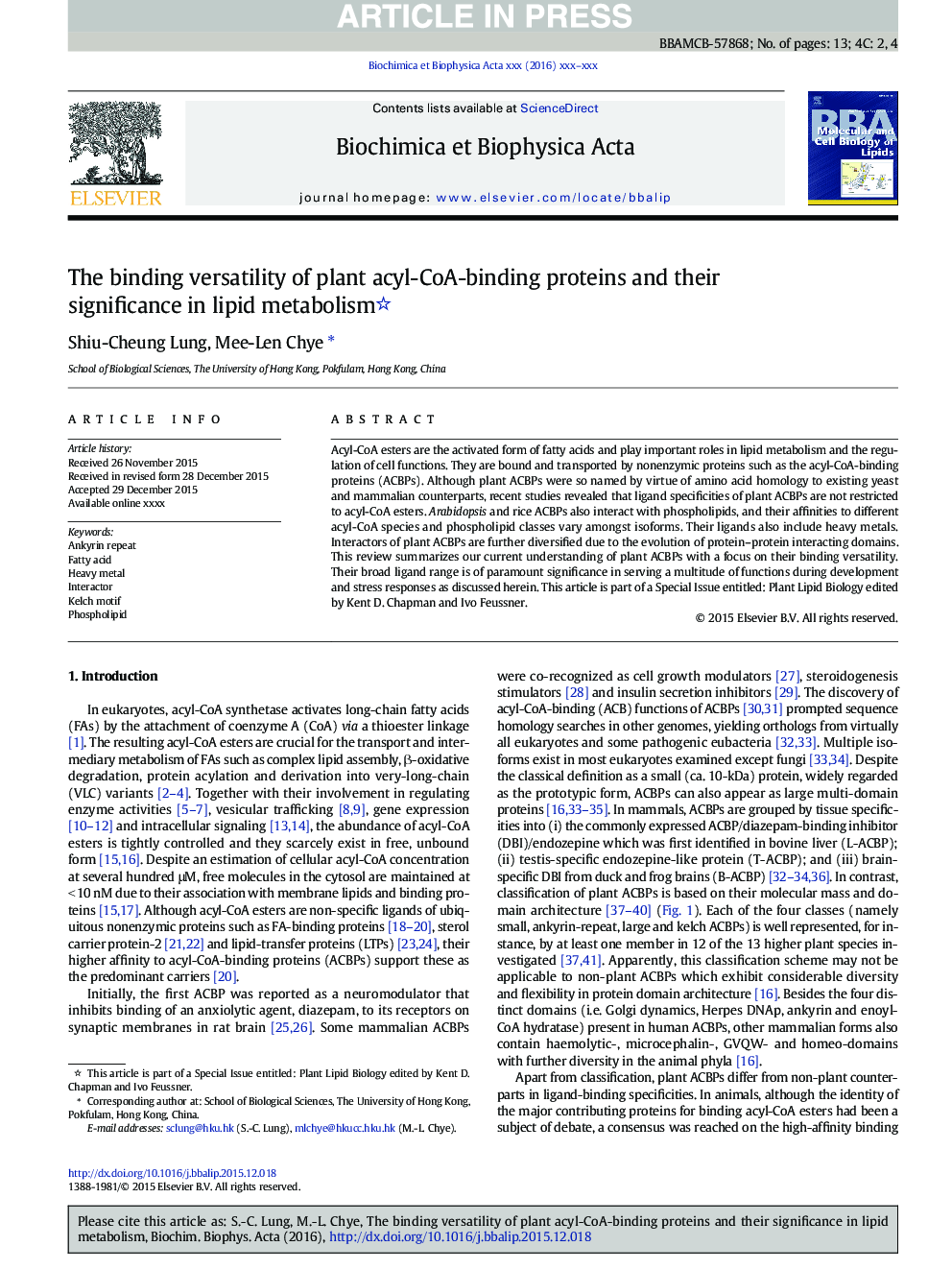| Article ID | Journal | Published Year | Pages | File Type |
|---|---|---|---|---|
| 8301552 | Biochimica et Biophysica Acta (BBA) - Molecular and Cell Biology of Lipids | 2016 | 13 Pages |
Abstract
Acyl-CoA esters are the activated form of fatty acids and play important roles in lipid metabolism and the regulation of cell functions. They are bound and transported by nonenzymic proteins such as the acyl-CoA-binding proteins (ACBPs). Although plant ACBPs were so named by virtue of amino acid homology to existing yeast and mammalian counterparts, recent studies revealed that ligand specificities of plant ACBPs are not restricted to acyl-CoA esters. Arabidopsis and rice ACBPs also interact with phospholipids, and their affinities to different acyl-CoA species and phospholipid classes vary amongst isoforms. Their ligands also include heavy metals. Interactors of plant ACBPs are further diversified due to the evolution of protein-protein interacting domains. This review summarizes our current understanding of plant ACBPs with a focus on their binding versatility. Their broad ligand range is of paramount significance in serving a multitude of functions during development and stress responses as discussed herein. This article is part of a Special Issue entitled: Plant Lipid Biology edited by Kent D. Chapman and Ivo Feussner.
Related Topics
Life Sciences
Biochemistry, Genetics and Molecular Biology
Biochemistry
Authors
Shiu-Cheung Lung, Mee-Len Chye,
